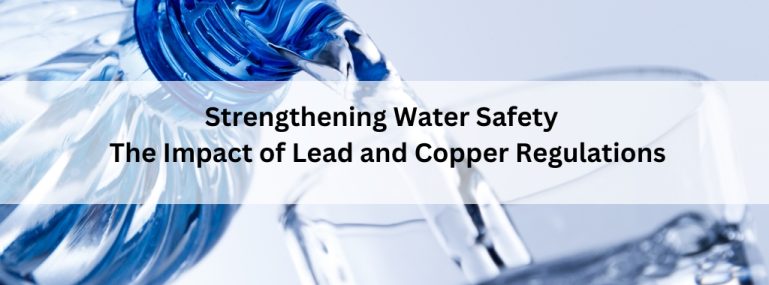Ensuring safe drinking water is crucial to public health. The Environmental Protection Agency’s (EPA) Lead and Copper Rule (LCR), established in 1991, aims to reduce lead and copper contamination in drinking water, particularly in older homes with corroded pipes. These contaminants pose serious health risks, including kidney damage, developmental delays, and brain impairment, especially in children and pregnant women.
Lead and copper can enter drinking water due to corrosion in pipelines and plumbing components. While lead is highly toxic, excessive copper levels can also lead to adverse health effects such as liver and kidney damage, as well as gastrointestinal issues.
Under the LCR, water utilities are required to take several measures to mitigate lead and copper contamination. These include replacing lead service lines, monitoring contamination levels, implementing corrosion control techniques, and educating the public on potential hazards and ways to minimize exposure, such as flushing taps or using certified water filters.
Adhering to the LCR offers multiple advantages:
- Improved Public Health: Reduced lead and copper exposure significantly enhances public health, particularly for vulnerable populations.
- Safer Drinking Water: Effective corrosion management ensures clean and safe water for communities.
- Increased Public Confidence: Transparent monitoring and proactive measures strengthen public trust in water safety.
- Long-Term Safety and Compliance: Compliance with the LCR promotes sustainable water safety and ensures adherence to federal regulations.
ComplianceXL supports organizations in ensuring compliance with the Lead and Copper Rule, helping them mitigate risks associated with these hazardous contaminants in drinking water. Through expert guidance, regulatory assessments, and effective compliance strategies, we empower communities and businesses to meet regulatory requirements, enhance water safety, and safeguard public health.
FAQs:
1. How do lead and copper enter drinking water?
Lead and copper primarily leach into drinking water due to the corrosion of plumbing materials that contain these metals.
2. Why is lead so hazardous?
Lead is a highly toxic metal that can cause severe health problems, including neurological damage, cognitive impairment, and developmental delays, particularly in children and pregnant women.
3. How can I reduce lead exposure in my drinking water?
To minimize exposure, use certified water filters, let cold water run for a few minutes before use, and consider replacing lead-containing plumbing fixtures.
4. What steps do water utilities take to comply with the LCR?
Water utilities must replace lead service lines, monitor water quality, implement corrosion control measures, and educate the public on ways to reduce exposure.
5. How often is water tested for lead and copper?
The frequency of testing depends on the size of the water system and previous test results. Larger systems may conduct annual tests, while smaller systems may test less frequently.





